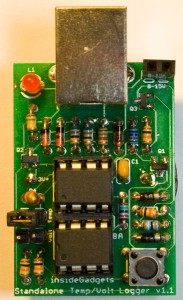Lloyd Atkinson
Newbie level 3

Hi,
I'm making a small battery powered temperature logger, so I'm trying to create a circuit that will make sure the battery life last's for as long as I can make it do so. I've come up with the idea of the microcontroller I'm using in the design to be able to use a transistor to be able to turn the other chips on in the circuit when it needs to use them and then turn them off again once it's finished talking to them. So far the only chips in the design is the uC and an I2C EEPROM.
Will this design I've created work? Also, are there any changes I should make to it? I believe a BC547B will be suitable? I've attached a circuit diagram to demonstrate what I'm asking.
Thanks for any help!

I'm making a small battery powered temperature logger, so I'm trying to create a circuit that will make sure the battery life last's for as long as I can make it do so. I've come up with the idea of the microcontroller I'm using in the design to be able to use a transistor to be able to turn the other chips on in the circuit when it needs to use them and then turn them off again once it's finished talking to them. So far the only chips in the design is the uC and an I2C EEPROM.
Will this design I've created work? Also, are there any changes I should make to it? I believe a BC547B will be suitable? I've attached a circuit diagram to demonstrate what I'm asking.
Thanks for any help!





